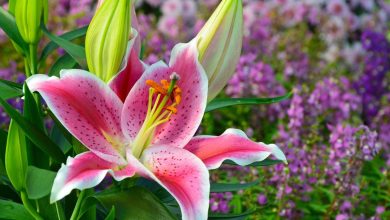[11] Anti-Mosquito Plants: Herbs, Ornamentals and Carnivores
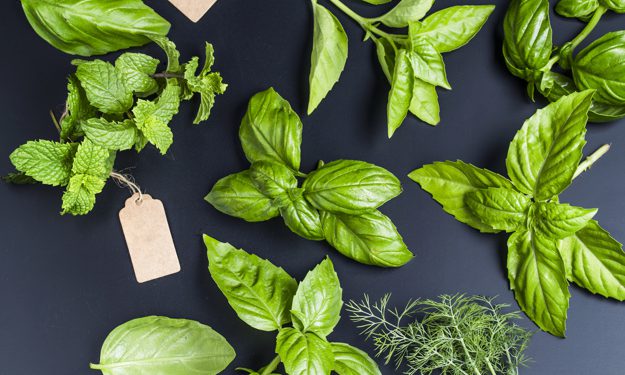
Do you suffer from the constant harassment of mosquitoes?This article will interest you.
With the arrival of summer, many of us begin to plan how we will spend our time outdoors. Unfortunately, any outdoor activity comes with an unavoidable nuisance: insects.
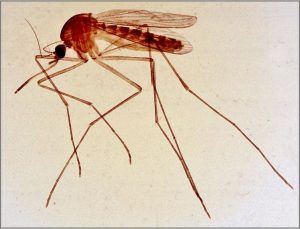 And especially the mosquitoes.
And especially the mosquitoes.
While we can find a wide variety of lotions and spray products on the market today, the idea of coating our bodies with chemicals may not always be that appealing.
Fortunately, in nature we can find different herbs and plants that not only help us repel these annoying insects, but are also attractive to the eye and have a pleasant aroma for people.
Begin toplant some of the anti-mosquito plantsand recover your garden. It is very easy, but above all, you will find that it is a highly effective solution.
What are anti mosquito plants?
Anti – mosquito plants are all those that, due to their essential oils and the aroma they emit, keep these insects away, since they tend to avoid them.
Why do they have a repellent effect?
Generally speaking, the essential substances secreted by repellent plantsaffect the sensorsthat allow the dipteran to locate the food source.
Mosquitoes not only use their eyes to search for food, they also rely on their thermal and chemical sensors. For example, their legs can detect the temperature difference between the environment and the victim, while their antennae help them accurately detect the carbon dioxide that we exhale when we breathe.
In this way, the substances of theanti-mosquito plants disorient insects and make them lose their ability to detect. Intoxicated in this atmosphere, the mosquitoes decide to move away to regain their senses.
What are the best-known substances with repellent power?
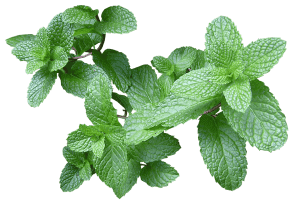 Among the list of the most effective natural compounds, pyrethrins, methyl-nonyl-ketone, geraniol, estragole, citronellol, limonene and trans-nerolidol have been recognized.
Among the list of the most effective natural compounds, pyrethrins, methyl-nonyl-ketone, geraniol, estragole, citronellol, limonene and trans-nerolidol have been recognized.
Likewise, there are some compounds that, without being considered as repellents, are well known to have such effects.
Such is the case of coumarin and phytol, two ingredients found in the grass known as Buffalo Grass or Sweet Grass (Hierochloe odorata), a perennial native to Central Europe with a high repellent power but which is very little. used for this purpose.
What types of anti mosquito plants are there?
Let’s analyze some of the best-known anti-mosquito plants:
Herbs
Basil (Ocimum basilicum)
Basil possesses not just one, but four ofthe volatile mosquito repellents: estragole, citronellol, limonene, and trans-nerolidol, with the former being the most abundant.
In addition, estragole is one of those responsible for its characteristic aroma.
Lavender
 Lavender is an excellent repellent for mosquitoes, moths, fleas, flies, and many other insects. In addition, it has a calming effect and induces sleep.
Lavender is an excellent repellent for mosquitoes, moths, fleas, flies, and many other insects. In addition, it has a calming effect and induces sleep.
Buffalo grass (Hierochloe odorata)
As we already mentioned, this herb is an excellent repellent, thanks to its two coumarin and phytol compounds that, in combination, are quite effective in keeping the annoying diptera at bay.
Mint
Mint, in addition to being a good repellent, its extracts can be combined with apple cider vinegar or vodka to make avery effective repellent oil.
We must be careful because mint spreads very easily and can cause problems in our garden.
Rosemary
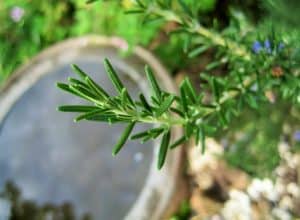 Rosemary is a good ally to keep mosquitoes away. You can take some of its leaves and boil them. The aroma that it will give off will be enough to achieve success.
Rosemary is a good ally to keep mosquitoes away. You can take some of its leaves and boil them. The aroma that it will give off will be enough to achieve success.
citronella
Citronella, among its essential components we find citral, geraniol, myrcene, limonene and citronellol, the latter are widely used to make repellent candles.
Cat grass or Catnip (Nepeta cataria)
This plant is well known among cat lovers. Its essential oil also makes it an effective ally against annoying insects.
Rue
Rue is a widely used plant in Latin America.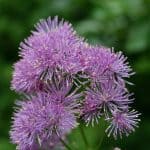
It has multiple uses in the extraction of its essential oils, due to its medicinal properties. However, it is poisonous so you have to be careful when harvesting it.
ornamental
Alliums
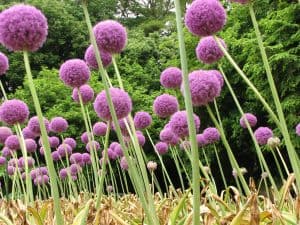 Allium is the genus of onions, garlic, leeks, and chives. That is, root vegetables. Its aroma is characteristic, although not all its members have a strong flavor.
Allium is the genus of onions, garlic, leeks, and chives. That is, root vegetables. Its aroma is characteristic, although not all its members have a strong flavor.
In addition, there are ornamental plants of this genus —such as the Allium giganteum— that will not only make your garden look sensational but will help you not to suffer when you spend time outside.
chrysanthemums
Chrysanthemums repel cockroaches, ants, beetles, ticks, lice, fleas, bedbugs, and mites. The ingredient that makes them so effective is pyrethrin, which is also used as an insecticide because it can easily kill all kinds of flying and jumping insects.
petunias
Brightly colored and low maintenance, petunias are an excellent natural pesticide and repellant. They can repel, in addition to mosquitoes, aphids, tomato hornworms, asparagus beetles, grasshoppers, and bedbugs.
Plant some petunias in a sunny area of your garden. Preferably near some bean, tomato, pepper, or basil crops.
carnivores
 Carnivorous plants, of course, do not repel mosquitoes. On the contrary, its function is to attract them to devour them. They are so effective that, in combination with one or more of the plants mentioned above, you will never have to worry about spending your afternoons outside in the company of your loved ones.
Carnivorous plants, of course, do not repel mosquitoes. On the contrary, its function is to attract them to devour them. They are so effective that, in combination with one or more of the plants mentioned above, you will never have to worry about spending your afternoons outside in the company of your loved ones.
Test it.
How are they planted?
Depending on what you want to grow, you can grow your anti-mosquito plants from seed or from healthy seedlings. Find out the particularities of each crop to know the most suitable date to do it.
Similarly, many aromatic herbs, such as oregano, rosemary, and mint, are easily propagated by cuttings. The best time to start cuttings is between August and September, so they will be ready for transplanting early next year.
All the plants mentioned here have the particularity that they can be sown directly in the garden, or in pots.
What are the main care of anti mosquito plants?
You must provide the general care required by any plant:a good substrate, light and frequent watering.
Some species tolerate light and heat better, while others prefer partial shade and are more cold hardy.
We as an irrigation system, mostlywe recommend drip irrigation. Although it depends on each specific species.
When and how are they pruned?
You must regularly prune the plants or they will develop very tall stems, but with few leaves. Almost always, it is recommended to cut the upper part of the plant to prevent it from growing vertically and stimulate more foliage, which translates into a better harvest.
When and how are they watered?
It’s necessary thattry to have good drainage in the land to avoid puddles, since some species can suffer from root suffocation and are more prone to disease. Likewise, there will be certain species that are more tolerant to droughts.
In general terms, try to keep the soil always moist in its superficial layers, trying not to make puddles when watering. It can be every other day or a couple of times a week, depending on the weather conditions in your region.

![Photo of Potato Beetle: [Identification, Elimination and Prevention]](https://www.complete-gardening.com/wp-content/uploads/2022/08/potato-beetle-identification-elimination-and-prevention-390x220.jpg)
![Photo of Tajinaste Rojo: [Characteristics, Habitat, Reproduction and Uses]](https://www.complete-gardening.com/wp-content/uploads/2022/08/tajinaste-rojo-characteristics-habitat-reproduction-and-uses-390x220.jpg)
![Photo of Prune the Garden: [Importance, Time, Tools, Considerations and Steps]](https://www.complete-gardening.com/wp-content/uploads/2022/08/prune-the-garden-importance-time-tools-considerations-and-steps-390x220.jpg)
